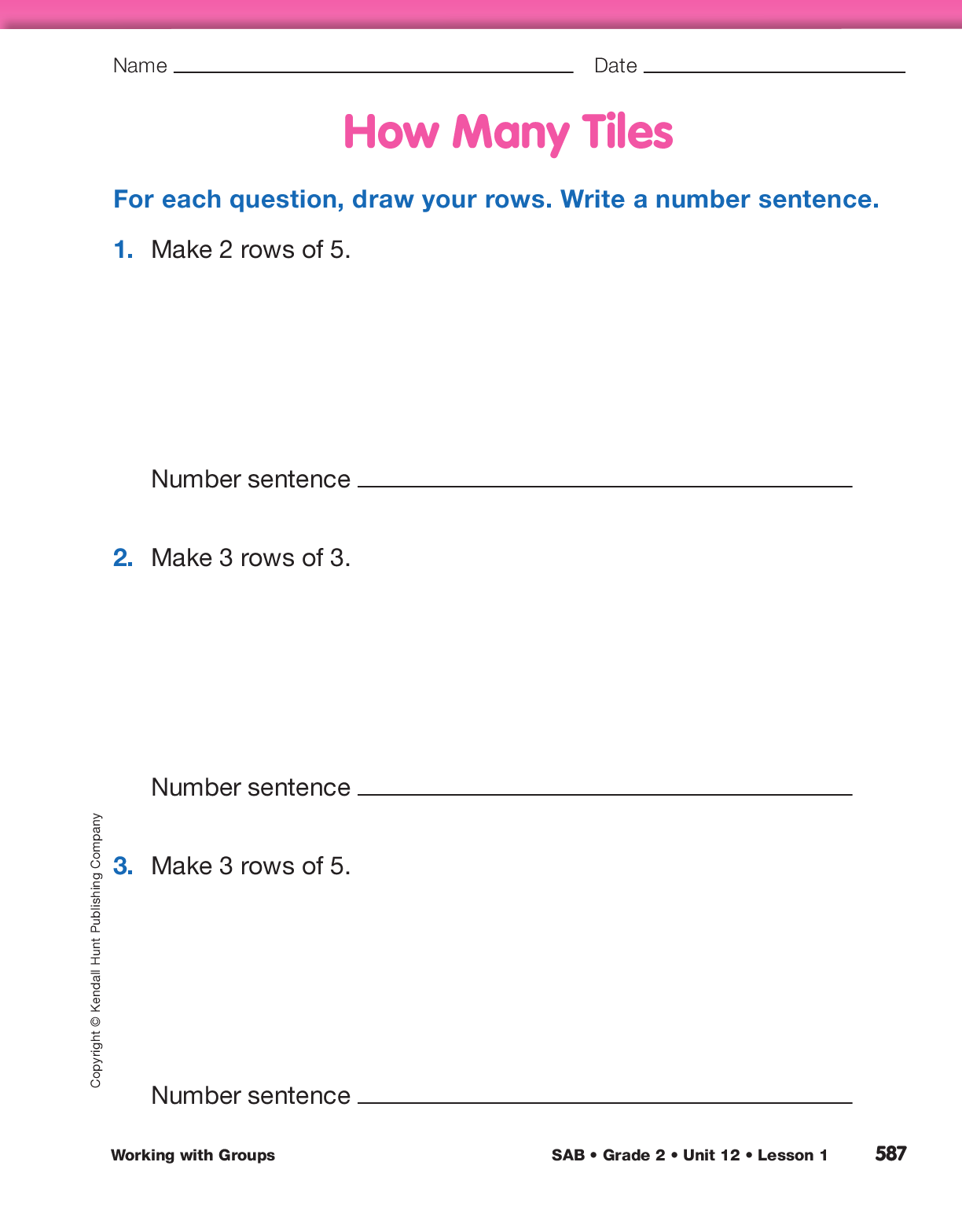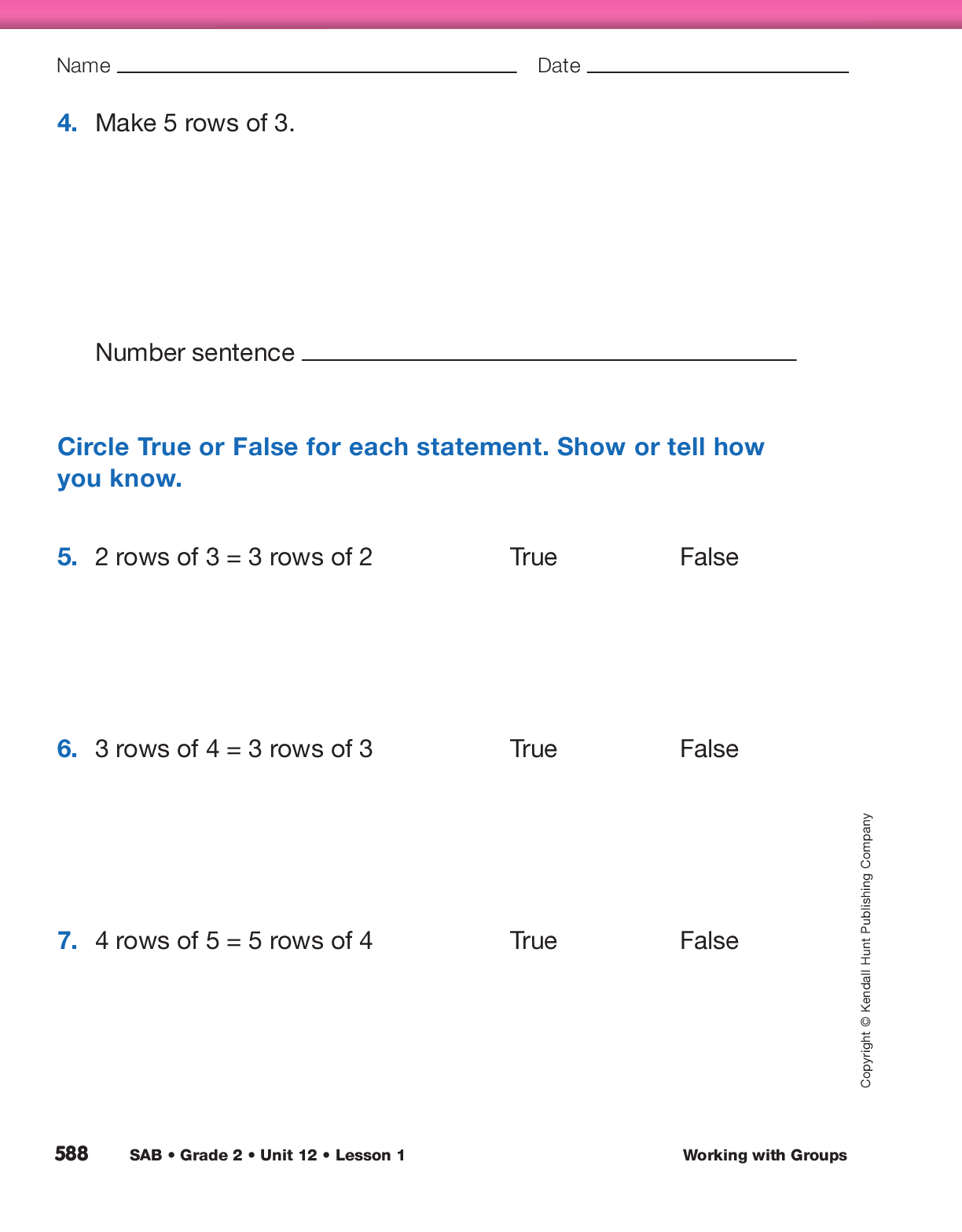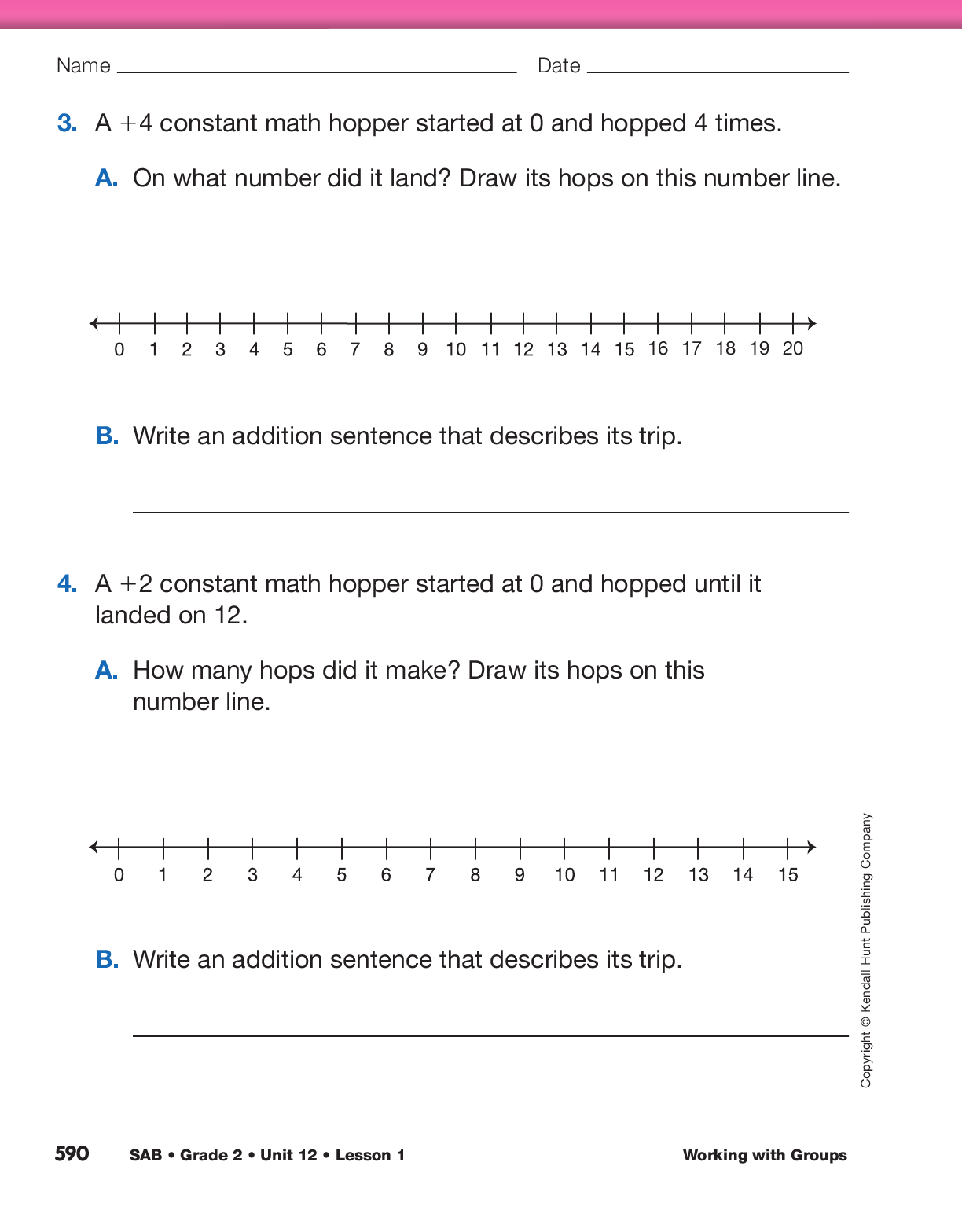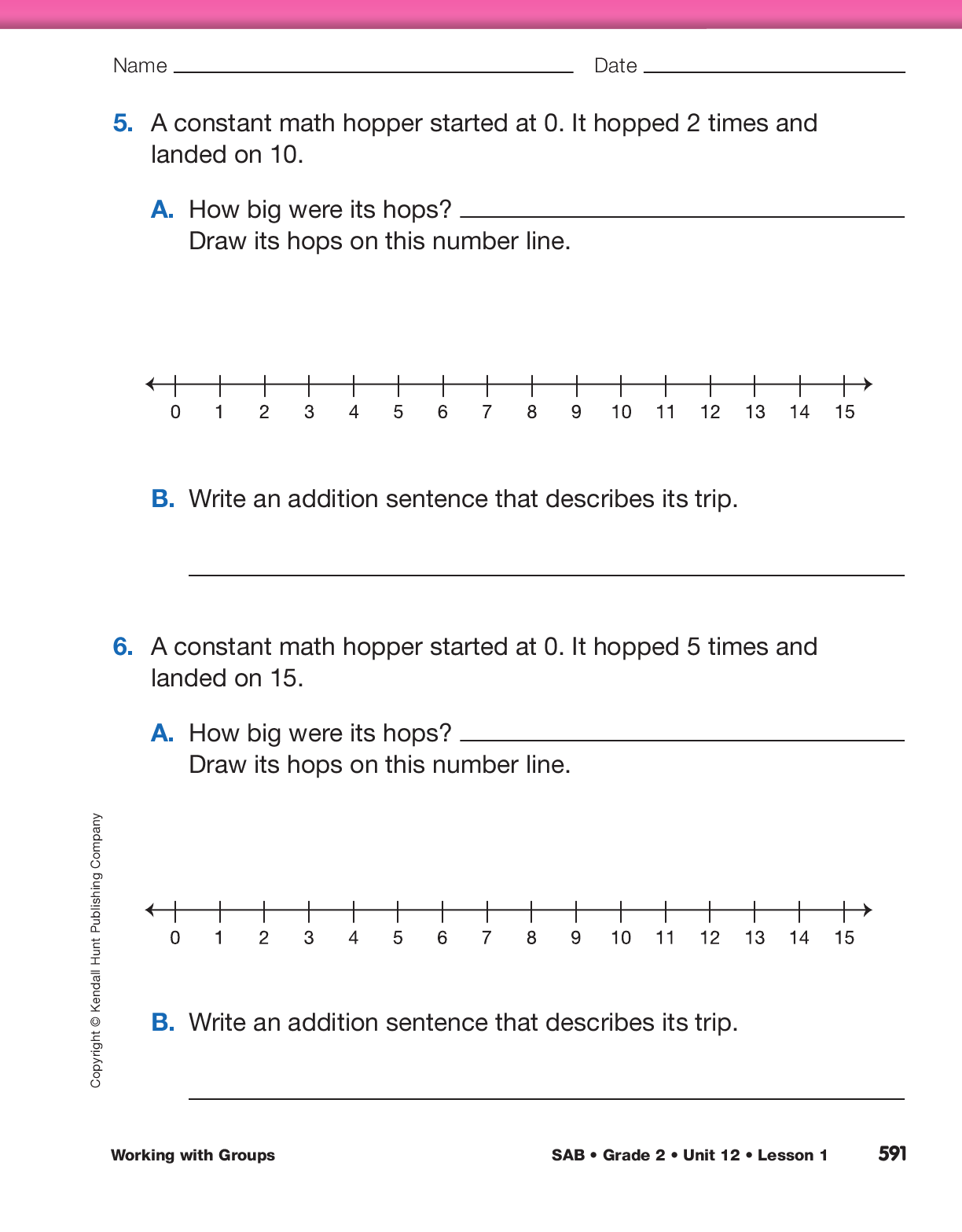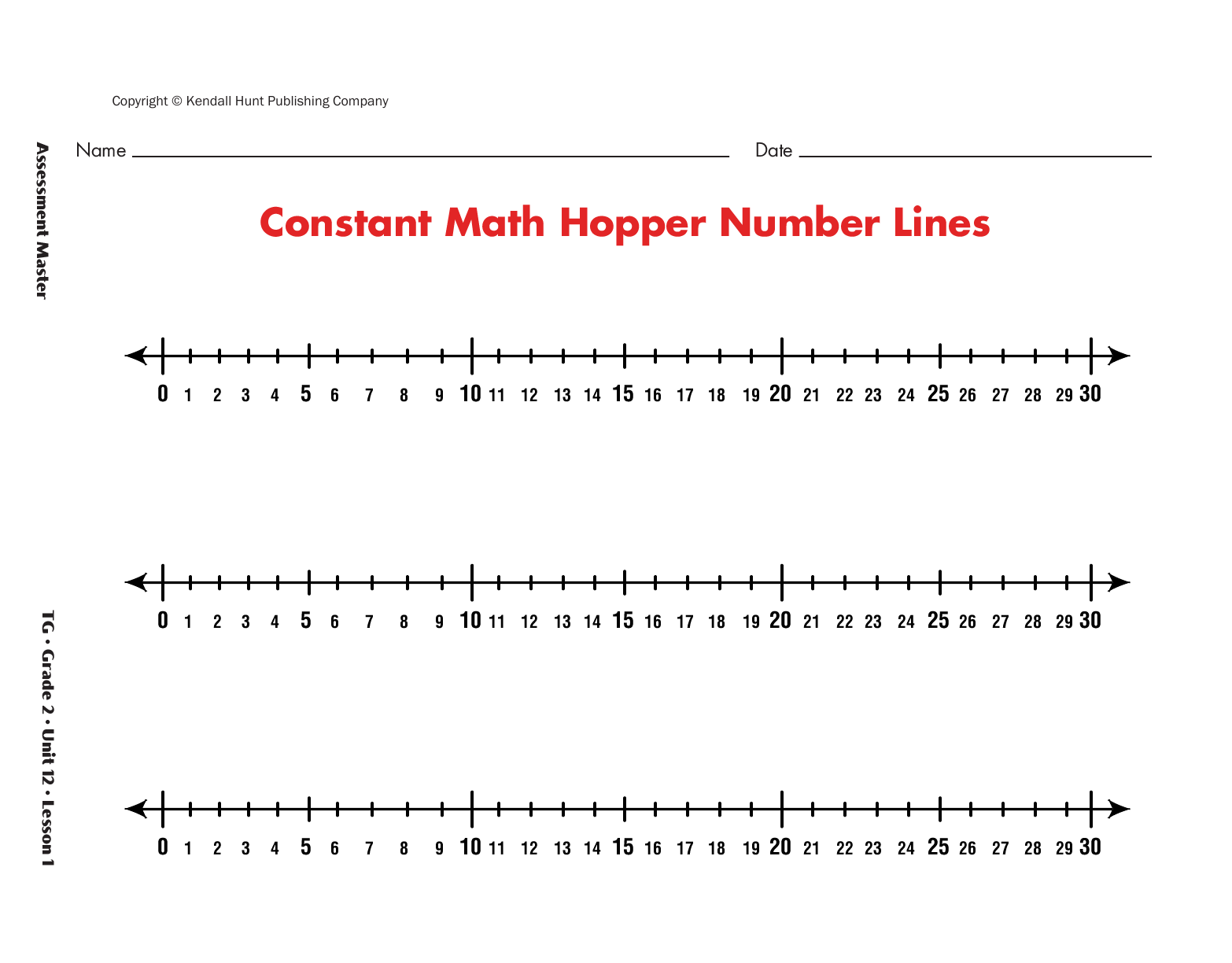Working with Groups
Est. Class Sessions: 2Developing the Lesson
Part 1: Making Equal Groups
Repeated Addition. Introduce the lesson by distributing tiles to student pairs. Explain that students will work with equal rows of tiles. Ask students to make 6 rows of 2.
Begin by placing 2 tiles in a row and say:
Point to the tiles that each number relates to in the number sentence.
Ask students to leave their 6 rows of 2 tiles on the side of their desks. Next ask students to make 2 rows of 6.
Ask:
Demonstrate how to rotate the 6 rows of 2 tiles to show 2 rows of 6 tiles. See Figure 1.
Ask:
Next ask students to make the following groups:
- 3 rows of 4 and 4 rows of 3
- 4 rows of 2 and 2 rows of 4
- 5 rows of 5
With each grouping, have students write repeated addition number sentences, show how the groupings relate to the number sentences, and compare the related groups of tiles (e.g., 3 rows of 4 and 4 rows of 3).
Ask:
Have student pairs work to complete the How Many Tiles pages in the Student Activity Book using tiles as needed.
Constant Math Hoppers. Remind students that they have solved problems about math hoppers in previous units. Base-ten hoppers can hop in distances of one, ten, and hundred. Explain that students will investigate constant hoppers, which are math hoppers that always hop a constant amount. Explain that constant means unchanging. For a constant math hopper, the distance it jumps on each hop does not change.
Use the display of the Constant Math Hopper Number Lines Assessment Master to introduce constant hoppers. Choose a number and demonstrate how a hopper jumps if it can only make jumps of that length.
Present a problem such as the following:
Demonstrate on a number line. See Figure 2. Ask:
Have students use tiles to show how the math hopper hopped.
Ask:
Next present a +4 hopper.
Say:
Demonstrate on a number line. See Figure 3. Ask:
Make up a few more problems about constant math hoppers that start at 0 and hop to the right. Ask students to demonstrate how the hopper moves on a number line. The number of hops and the size of each hop determine where the math hopper stops. Have students write repeated addition number sentences and explain how each number in the number sentences connects to the constant math hopper’s trip. Each time, turn the numbers around and demonstrate how the number sentences result in the same answer.
Once students are familiar with constant math hoppers, have them work in pairs to complete the Constant Math Hoppers pages in the Student Activity Book using their desk number lines or tiles as needed. For each problem, students determine where the math hopper lands, the number of hops, or the size of each hop.
Point out to students that the arrows on the hops should point to the right since the constant hopper is moving from zero to larger numbers. Remind them to label the hops with the number of units (e.g., +5, as in Figure 2 or +4 as in Figure 3).
As students finish, ask them to explain how they found their answers for Question 5 and Question 6. These questions may have presented a challenge for some students since they were not told what kind of a constant math hopper was involved. They had to solve the problem in some way other than making hops on their number lines. Ask students to check their answers by showing the hops on their number lines.














